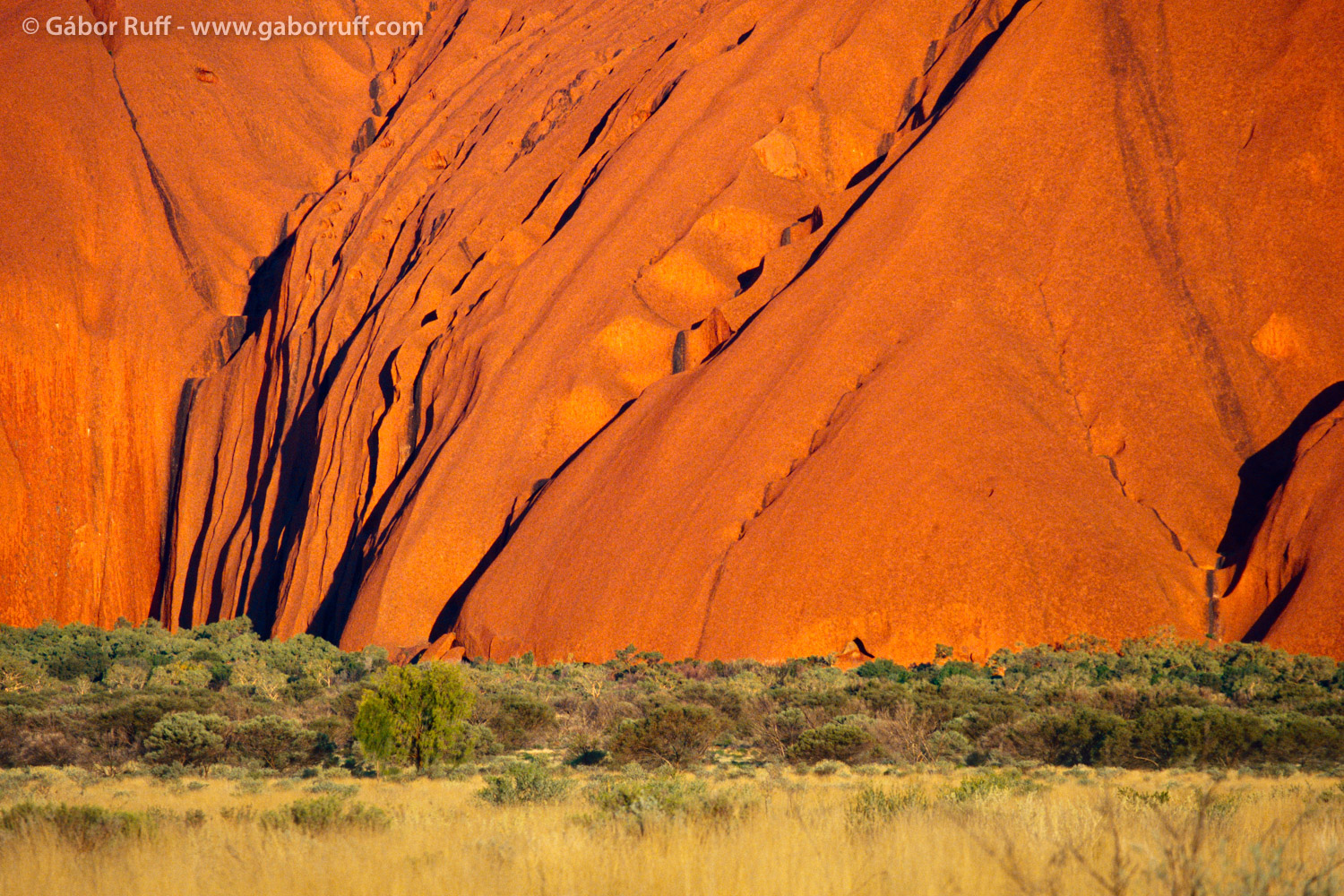Uluru is undoubtedly Australia’s most recognizable landmark, so visiting the Uluru-Kata Tjuta National Park (map) was the most anticipated part of our Australia Road Trip. Uluru, also known as Ayers Rock, is a sacred site for the Aboriginal people of this land, called Anangu. I’m not really a spiritual person, but there’s something with this huge red rock that has always drawn me in, since I first saw it in a television series created by an esteemed Hungarian explorer. Uluru is an enormous sandstone monolith in the middle of the desert and it is listed as a UNESCO World Heritage Site. The sandstone stands 1,142 feet (348 m) high and its total perimeter is 5,8 miles (9.4 km). This ancient red rock is famous for appearing to change color during sunset when it glows in different red hues. The reddish color comes from the iron oxide in the sandstone. I made a time-lapse video to show this amazing phenomenon: 1.5 hour in just a few seconds.
Uluru is a very remote place that makes visiting it an even more unique adventure, especially if you drive here. You can fly to a nearby location too, but we wanted to drive through the Outback anyway, so we arrived by our rental 4WD camper. It took us four days of traveling from Kakadu, but we enjoyed it as the desert is not as empty as some might think, so the long drive wasn’t boring at all. It was already afternoon when we arrived to the campground, so we went to the sunset viewing area as soon as we arranged our campsite. I set up my Canon EOS 5DsR camera with my 17-40mm f/4 lens for time-lapse shooting, then put a roll of film into my old Canon EOS-1 analog camera to photograph Uluru from different angles too. It is a very old rock, that was formed over half a billion years ago, so I felt I had to photograph it with an older technique as well, hence the film camera. I used Kodak Ektachrome E100 slide film, because it has wonderful colors that can give justice for this stunning rock formation during sunset. I utilized my 24mm f/2.8 lens to show the entire rock and also my 70-200mm f/4 lens to show close details of the sandstone formation.





Next day we walked the 6.5 mile (10.6 km) long trail around Uluru so we could see this magical place from every angle. There are many sections where photography is prohibited for reasons related to traditional beliefs, so if you want to fully see Uluru, you have to be there in person. We respected the indigenous people’s faith, and it actually made the whole experience for us even more enchanting. Seeing Uluru in person was an exceptional adventure. It was worth the waiting, the long drive and everything. We were very grateful to be able to explore this remarkable place and it wasn’t over yet. There’s another extraordinary mountain in the national park: Kata Tjuta, also called The Olgas. It is about 16 miles (25 km) west of Uluru. It has the same cultural significance for the local people as Uluru has. We spent the second sunset with these rock formations and enjoyed the spectacular colors here as well. This time I used my Canon EOS 5DsR camera with my wide angle zoom lens. This national park is a wonderful place in Australia’s red desert. Visiting Uluru and Kata Tjuta was one of the most memorable parts of our entire trip.


